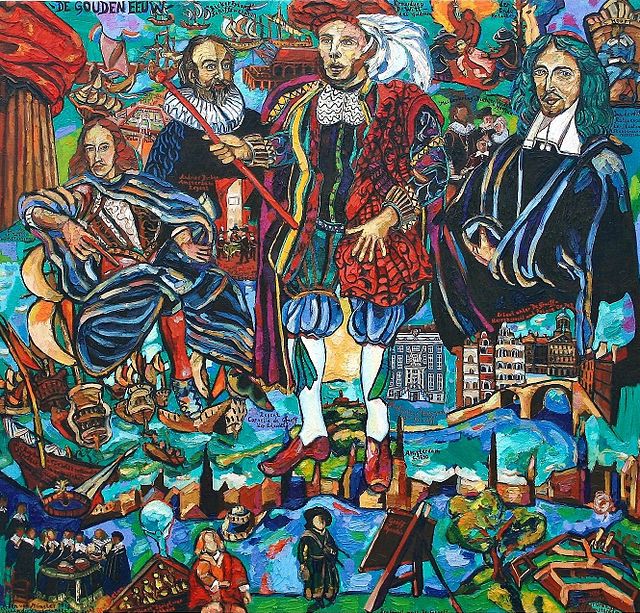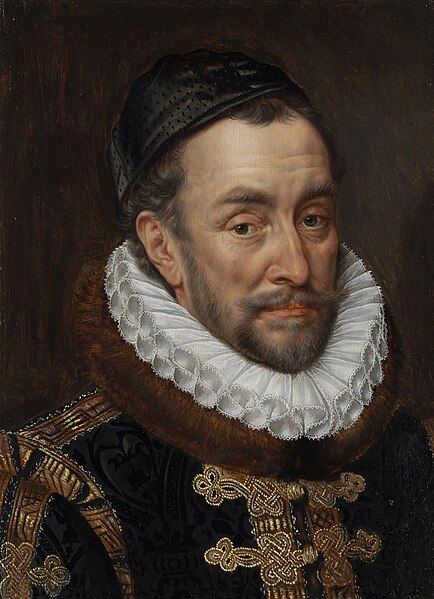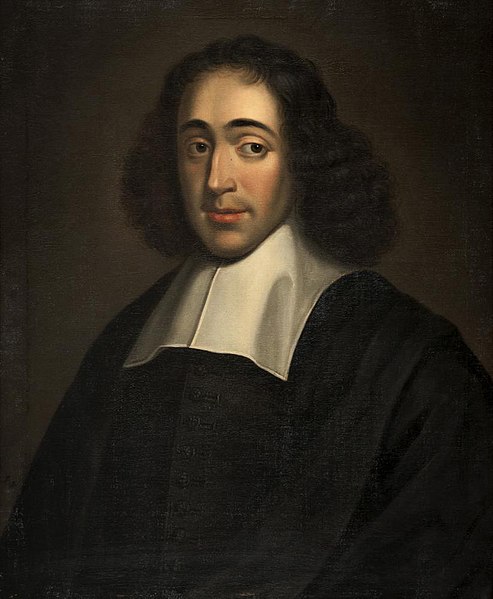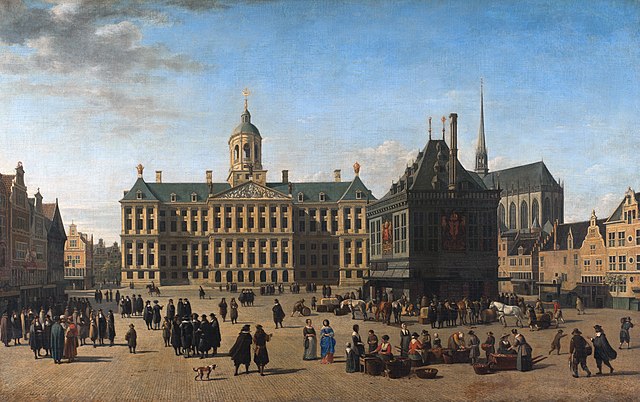Johan de Witt, Lord of Zuid- en Noord-Linschoten, Snelrewaard, Hekendorp en IJsselvere, was a Dutch statesman and a major political figure in the Dutch Republic in the mid-17th century, the First Stadtholderless Period, when its flourishing sea trade in a period of global colonisation made the republic a leading European trading and seafaring power – now commonly referred to as the Dutch Golden Age. De Witt was elected Grand pensionary of Holland, and together with his uncle Cornelis de Graeff, he controlled the Dutch political system from around 1650 until the Rampjaar of 1672. This progressive cooperation between the two statesmen, and the consequent support of Amsterdam under the rule of De Graeff, was an important political axis that organized the political system within the republic.
Portrait from the studio of Adriaen Hanneman, 1652
Wendela Bicker
Portrait of Johan de Witt (after Jan de Baen)
Historical-allegorical painting "De Gouden eeuw" about the De Graeff family of the Dutch Golden Age. The painting shows the protagonists around the Amsterdam regent Cornelis de Graeff (middle) and his relatives Johan de Witt (right), Cornelis de Witt (left) and Andries Bicker (second from left) as well as some events from this decade. (Painting by Matthias Laurenz Gräff, 2007)
The United Provinces of the Netherlands, officially the Republic of the Seven United Netherlands, and commonly referred to in historiography as the Dutch Republic, was a confederation that existed from 1579 until the Batavian Revolution in 1795. It was a predecessor state of the present-day Netherlands, and the first independent Dutch state. The republic was established after seven Dutch provinces in the Spanish Netherlands revolted against Spanish rule, forming a mutual alliance against Spain in 1579 and declaring their independence in 1581. It comprised Groningen, Frisia, Overijssel, Guelders, Utrecht, Holland, and Zeeland.
William of Orange, by Adriaen Thomasz Key.
Anonymous portrait of the Dutch philosopher Baruch Spinoza. He was of Portuguese-Jewish origin.
The Amsterdam Stock Exchange, by Job Adriaenszoon Berckheyde
Dam Square in the late 17th century: painting by Gerrit Adriaenszoon Berckheyde








